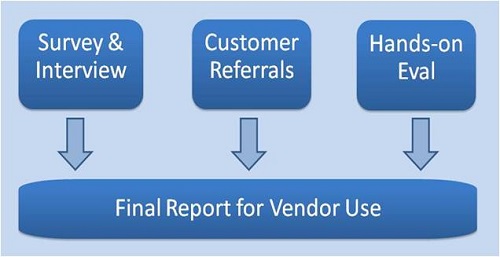By Richard Quinnell, editor-in-chief
With everyone jumping onto the IoT bandwagon, confusion reigns supreme. More than 400 software platforms for IoT systems have arisen with more on the way, leaving potential users with major challenges deciding what to purchase from whom. The International M2M Council (IMC) is trying to make acquiring IoT software quicker, easier, and safer for buyers, creating a stable marketplace for buyers and sellers alike.
One of the key ways in which companies screen potential vendors to help them on major projects is to create a request for proposal (RFP) that defines the project’s preliminary requirements and solicits competitive bidding from vendors interested in taking on the project. Unlike a request for quotation (RFQ), which asks for pricing on existing products, the RFP is used to solicit proposals for creating something that does not yet exist. Respondents must reply with information that addresses the technical approach that they would use to meet project requirements and the costs involved, and they must include business information to assure the buyer that they can complete the project as bid.
But in the still-emerging world of the IoT, many vendors lack the solid success history traditionally needed to win an RFP. This leaves buyers hesitant to engage such vendors without extensive investigation into their backgrounds. The result is a slower and riskier process for getting projects launched.
According to surveys that the IMC has conducted, the 25,000 IoT buyers within its membership would welcome the introduction of a standardized RFP document template to help in defining their IoT software needs, to which potential vendors could respond. Furthermore, some 83% of those surveyed would also welcome a mechanism by which third-party consultants could help certify vendor compliance with an RFP and vet potential vendors. With such mechanisms in place, vendors could more quickly and completely prepare RFPs and be assured that the bids they get back are from proven reliable vendors and conform to the requirements.

IMC’s validation program for IoT software vendors includes three key elements in its evaluation process. Image source: IoT M2M Council.
Based on these results, the IMC has begun work on a program that aims to stimulate, streamline, and strengthen the safety of IoT buyer/vendor interactions. The program has two parts. The first part is an RFP template, formed in an open collaboration process with input from more than 100 potential IoT buyers and released at CES. The template provides a standardized way of expressing the buyer’s project requirements and information needs for evaluating responses, helping prevent inconsistent terminology and ensure completeness.
The second part of the IMC’s program is the establishment of a third-party vendor validation process, conducted by Beecham Research, which pre-qualifies potential responders to RFPs coming from IMC members. The involvement of a third-party evaluator seeks to reassure potential buyers that the certified vendor companies have been thoroughly vetted and that their capabilities are as promised. The validation process certifies participating vendors as “Model IoT Providers” by using a combination of hands-on evaluation, customer references, and a survey detailing the vendor’s platform’s capabilities in areas such as security, connectivity, analytics, and device management. At the end of the process, vendors receive a report that they can send to buyers in response to their RFP, significantly shortening the sales cycle. To further speed the process as well as to encourage vendors to participate in the program, the IMC will provide member companies creating RFPs with qualified vendor lists drawn from the validation program. Three major IoT providers — HPE, PTC, and Wind River — have taken a lead role in trialing the validation process.
While the current effort is limited to IoT software, it will not be stopping there. The IMC intends to expand its program to include hardware and connectivity solutions as well. The goal of all of this effort is to build a robust marketplace in which potential IoT buyers and vendors can interact quickly while minimizing risk, thus streamlining growth of the IoT. If it can achieve this goal, everyone will benefit.
Advertisement
Learn more about Electronic Products Magazine





